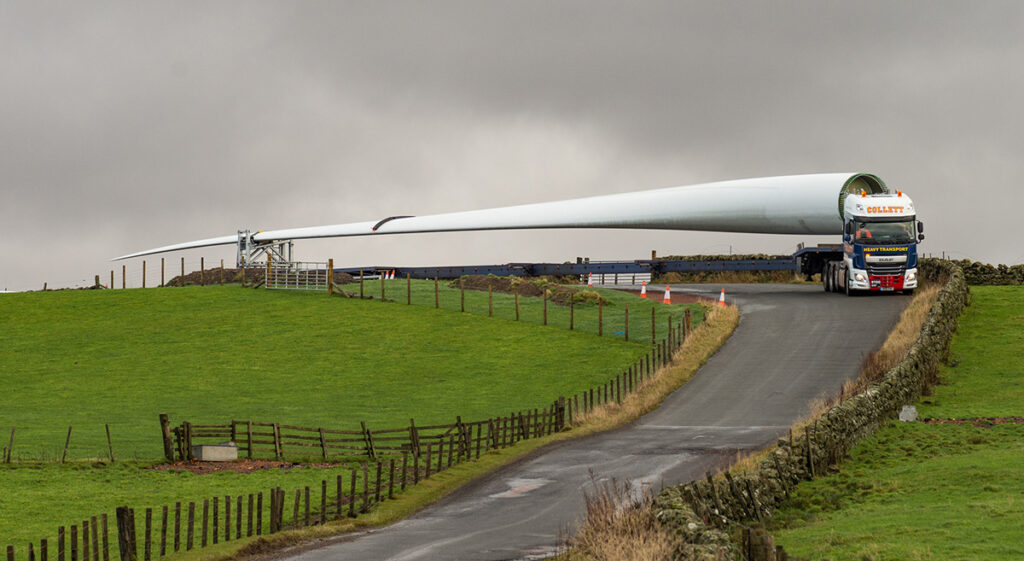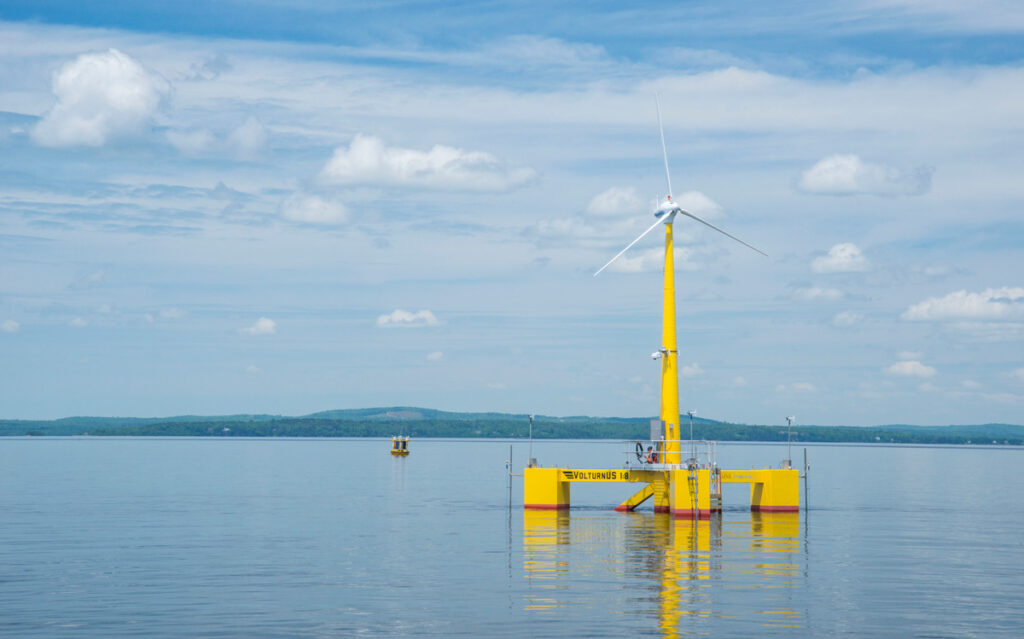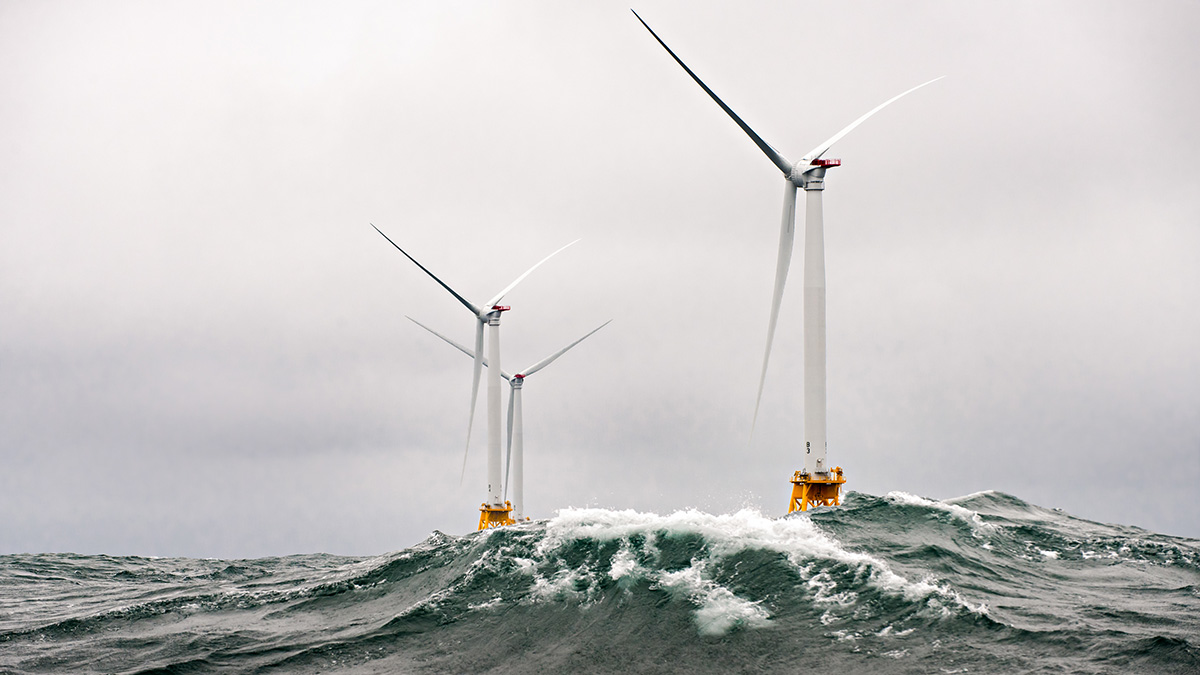Europe has long embraced offshore wind farms—the first one was built off the coast of Denmark in 1991. More than 5,400 grid-connected turbines in European waters generate around 25 gigawatts, which is more than 70% of the offshore wind power produced globally today.
Offshore wind farms are now gaining traction in the United States, which is currently home to just seven offshore wind turbines and produces 42 megawatts—less than 0.1% of the world’s offshore wind energy. Several commercial-scale facilities are in development in U.S. waters. Earlier this year, the Biden administration set forth a goal of producing 30 gigawatts of offshore wind energy by 2030, and has since announced the plan to develop up to 7 large-scale wind farms along U.S. coasts.
That’s an audacious target, but it’s also an important one: Wind is free and often plentiful, and the energy it supplies can reduce reliance on fossil fuels, which are currently used to produce nearly 60% of the electricity generated in the United States.
A more sustainable future is clearly in sight as offshore wind farms proliferate globally and increase in capacity. But building and operating offshore wind farms come with their own set of challenges, ranging from accurately surveying the seafloor to constructing floating foundations in deep water. These challenges are testing the mettle of scientists and engineers alike, but with the latest report from the Intergovernmental Panel on Climate Change warning that warming will reach 1.5°C by the early 2030s, there’s strong impetus to succeed.
The Many Benefits of Going Offshore
Right now more than 99% of wind farms in the United States are land based. Wind farms on land have significant limitations, the primary one being that 40% of U.S. residents live in coastal counties where space is at a premium.
“You have major population centers on the East Coast that are looking to benefit from the development of renewable energy,” said Darryl François, chief of the engineering and technical review branch for the offshore energy program at the Bureau of Ocean Energy Management (BOEM). “For large, commercial-scale, utility-type projects, you need a lot of open acreage”—that’s tough to find near these metropolitan areas.
Moving wind farms offshore presents a viable solution. Producing power near major population centers suddenly becomes feasible, and doing so minimizes transmission-related losses, said François. “You can deliver [energy] where it’s needed.”
“There’s almost always much more wind and consistent wind offshore.”
Offshore wind farms also reap the benefits of the stronger, more predictable winds commonly found at sea. “There’s almost always much more wind and consistent wind offshore,” said Dan Lizarralde, a geophysicist at Woods Hole Oceanographic Institution (WHOI) in Massachusetts. That’s true in part because there’s nothing—no mountains or trees—to block the wind, he said.
And where these wind farms are going, they don’t need roads—that’s good because modern wind turbines can be hundreds of meters in diameter. “Offshore wind turbine components are transported by ships and barges,” said Jocelyn Brown-Saracino, offshore wind lead at the U.S. Department of Energy, “reducing some of the logistical challenges that land-based wind components encounter, such as narrow roadways or tunnels.”
Moving offshore can also sidestep a myriad of state, local, and other jurisdictional regulations and permitting requirements, said François. “You’re working with one landlord, which is the federal government.” (Wind farms lease parts of the Outer Continental Shelf, a vast region generally defined as beginning 3 nautical miles offshore and extending to 200 nautical miles, from BOEM, an agency of the U.S. Department of the Interior.)

All of the sites leased for offshore wind farms in the United States have thus far been located on the Atlantic coast. (Two, the Coastal Virginia Offshore Wind project and Rhode Island’s Block Island, have been developed with wind farms and have a combined capacity of 42 megawatts—sufficient to power roughly 20,000 homes.) Leasing the Atlantic continental shelf is not surprising given the bathymetry of the area, said Anthony Kirincich, an oceanographer at WHOI. “We have a very shallow, wide shelf.”
Ways to Avoid Hitting Rock Bottom
The shallow waters of the Atlantic coast (often fewer than 30 meters in depth) make it relatively straightforward to install the foundations that support a wind farm’s turbines. Furthermore, the wide continental shelf allows for more turbines to be installed farther offshore, which homeowners appreciate. “They’re out of sight, out of mind,” said Kirincich.
Boulders the size of houses and submarine trenches as deep as the Grand Canyon make installing turbines more than just challenging; it is often impossible.
More than a lack of aesthetic appeal, there are geophysical reasons wind farms don’t line the shore. Boulders the size of houses and submarine trenches as deep as the Grand Canyon make installing turbines more than just challenging; it is often impossible.
Massive boulders known as glacial erratics dot much of the New England coastline. They’re relics of the last period of glaciation, which ended roughly 20,000 years ago. These erratics can sit on the seafloor or be buried under the surface. Their presence can significantly set back a project, said Lizarralde, particularly if one is discovered during the process of anchoring a turbine by sinking enormous steel pipes 30 meters into the seafloor.
Sonar can reveal exposed boulders on the seafloor, but buried features are tougher to spot. To pinpoint underground glacial erratics, researchers often turn to seismic reflection surveying. This technique involves passing sound waves through the seafloor and recording how they’re transmitted and reflected. These measurements allow geoscientists to infer the presence of geological features, including boulders. Even so, scientists’ ability to really see what’s down there remains limited, said Lizarralde. “We have poor knowledge of what’s below the seafloor.”
Developers sometimes look for ways to avoid digging into the seafloor. Ørsted, an energy company with headquarters in Denmark, recently opted not to bury the transmission cables of several of its offshore wind farms, eschewing standard practice. To protect the seafloor from the heavy cables, they deliberately placed rocks beneath the lines in an effort to prevent erosion. That practice turned out to be a mistake—the rocks ended up abrading the cables, some to the point of failure.
“As the water depth gets beyond 50 meters or so, building a fixed-bottom support structure becomes borderline uneconomical or completely uneconomical.”
Besides keeping an eye out for rocks, developers must also survey the properties of the seafloor itself, such as its slope and composition, said Sanjay Arwade, a professor of civil engineering and associate director of the Wind Energy Center at the University of Massachusetts Amherst. Most offshore wind turbines are rigidly connected to the seafloor via a foundation, the design of which is informed by local conditions. Common designs include a so-called monopile (a single long, hollow pipe sunk into the seafloor), a jacket foundation (a three- or four-legged structure affixed to the seafloor), and a gravity base (a large mass, typically a block of concrete, resting on the seafloor).
Careful surveying is therefore necessary to evaluate a potential site, said Arwade. A “site investigation [to discover what the geology and geotechnical properties are] allows the design engineers to do their job.”
The marine environment also brings with it many other fundamental challenges. Installing and maintaining wind turbines at sea necessitate a ship, specialized equipment, and professional divers. Waves impart stress on turbine foundations, and storms—such as nor’easters and hurricanes—can kick up larger-than-normal waves that batter structures. And at some point off the coast the economic benefit of building a wind farm plummets to zero: “As the water depth gets beyond 50 meters or so, building a fixed-bottom support structure becomes borderline uneconomical or completely uneconomical.”
Floating in Deep Water
Water depth is one of the primary reasons offshore wind farms don’t yet dot the West Coast: The continental shelf there tends to fall off much more steeply, and water depths routinely exceed 30 meters close to shore. Researchers and engineers at the University of Maine decided to take on this challenge by developing a new type of wind turbine with a floating foundation intended to be deployed in deeper waters.

“We formed the very first university-based research team on floating wind technologies,” said team leader Habib Dagher, executive director of the University of Maine’s Advanced Structures and Composites Center. Maine is home to some of the speediest offshore winds in the United States, but its coastal waters are as deep as those on the West Coast.
The project, launched in 2007, aims to satisfy immediate needs—an alternative to the rising costs of heating oil in the state—as well as alleviate long-term concerns about fossil fuel use and climate change, said Dagher. “Our concerns about global climate change are very real.”
VolturnUS 1:8 performed extremely well during its 18-month deployment: Even during stormy conditions, it never heeled by more than 6°.
Over 6 years, the team designed and built a one eighth scale model of a single-turbine facility capable of producing 6 megawatts of electricity. The three-pronged floating concrete hull had a draft of 3 meters and was anchored to the seafloor with three mooring lines.
In June 2013, the team towed its prototype, called VolturnUS 1:8, just off the coast of Castine, Maine. The following month, the facility began delivering electricity to the Central Maine Power Company grid via an undersea cable. The researchers generated energy, along with a slew of data. More than 50 sensors recorded environmental conditions and the structure’s response to those conditions, including accelerations, strains, and loads on the mooring lines. The data revealed that VolturnUS 1:8 performed extremely well during its 18-month deployment: Even during stormy conditions, it never heeled by more than 6°.
“It was a very successful program,” said Dagher.
In addition to opening new regions of continental shelves to offshore facilities, floating platforms also sidestep a common problem associated with rigid foundations: the noise produced by driving support structures deep into the seafloor. “Everyone wants to be aware of and careful of the potential impacts of construction noise on marine life.”
Given the potential of floating platforms, Dagher and his collaborators are currently designing a full-scale model of an 11-megawatt floating facility that builds on the lessons learned from VolturnUS 1:8. Known as the New England Aqua Ventus I project, it’s slated to be in operation by 2024 and to produce power off the coast of Maine for more than 20 years.
Looking Ahead: The Knowns and Unknowns
Offshore wind farms, both affixed to the seafloor and floating, will no doubt proliferate in U.S. waters. Just a few months ago, BOEM approved the development of an offshore wind farm south of Martha’s Vineyard, Mass. It’s slated to include 62 wind turbines, each topping 250 meters in height and each capable of generating 13 megawatts. The developer, Vineyard Wind, estimated that the power this facility will produce—roughly 800 megawatts—will be sufficient to supply more than 400,000 homes on the Eastern Seaboard.
The Martha’s Vineyard project is an important contributor to the growth of the offshore wind energy sector, but there’s a lot more in the pipeline, said François. If all of the projects under lease right now along the Atlantic coast are developed, he said, the potential capacity of offshore wind energy in the United States is 19–21 gigawatts.
Over on the Pacific coast, California governor Gavin Newsom announced in May an agreement to open up parts of the West Coast for offshore wind farms, with most using floating foundations. BOEM plans to offer leases off the central and northern coasts of the Golden State as early as next year.
As with any new infrastructure, sometimes only time will tell engineers what they need to know. Kirincich noted that there’s a lack of understanding of how wind turbine structures corrode over time and how their blades fatigue with age. “Most of these structures are designed for hurricane-force winds,” he said, but “how good is the corrosion coating?”
Nevertheless, in the very near future, Los Angeles beachgoers will likely be able to squint between the surfers to see flocks of swiftly turning turbine blades crowding out the offshore oil rigs. Geoscientists and engineers must work together to overcome the issues presented by ocean terrain and new technologies meant to last a lifetime. Progress often comes in leaps and bounds. In this case, it comes in gales.
Author Information
Katherine Kornei (@KatherineKornei), Science Writer



